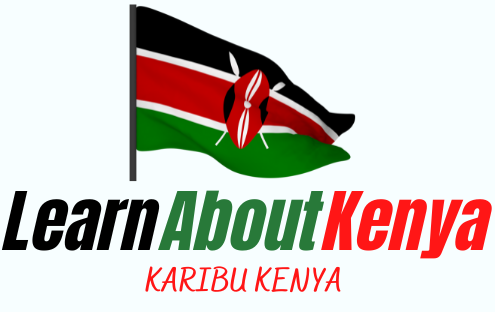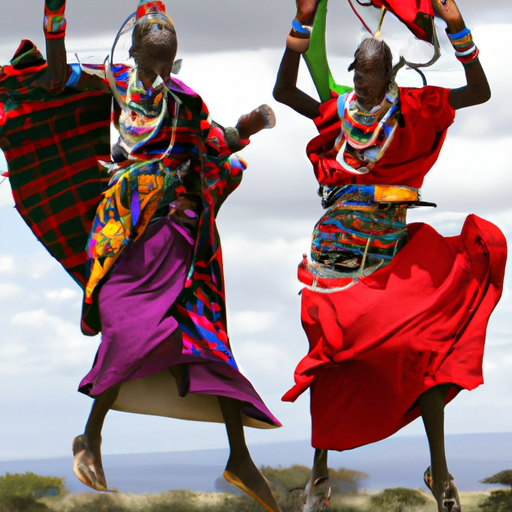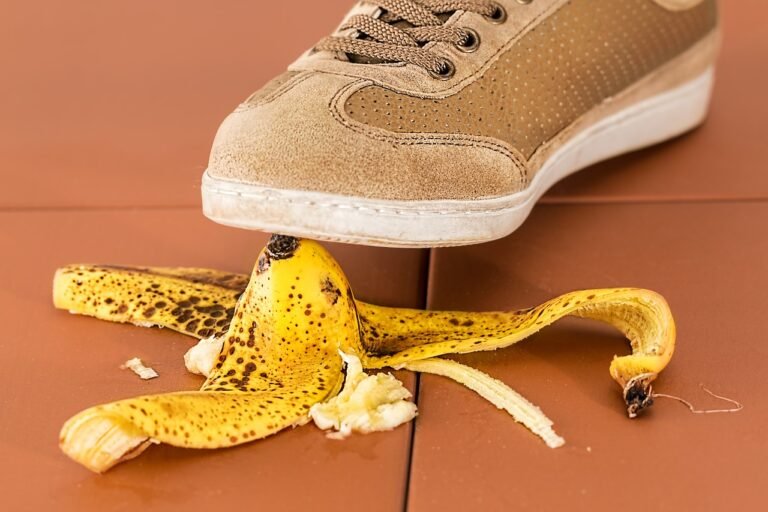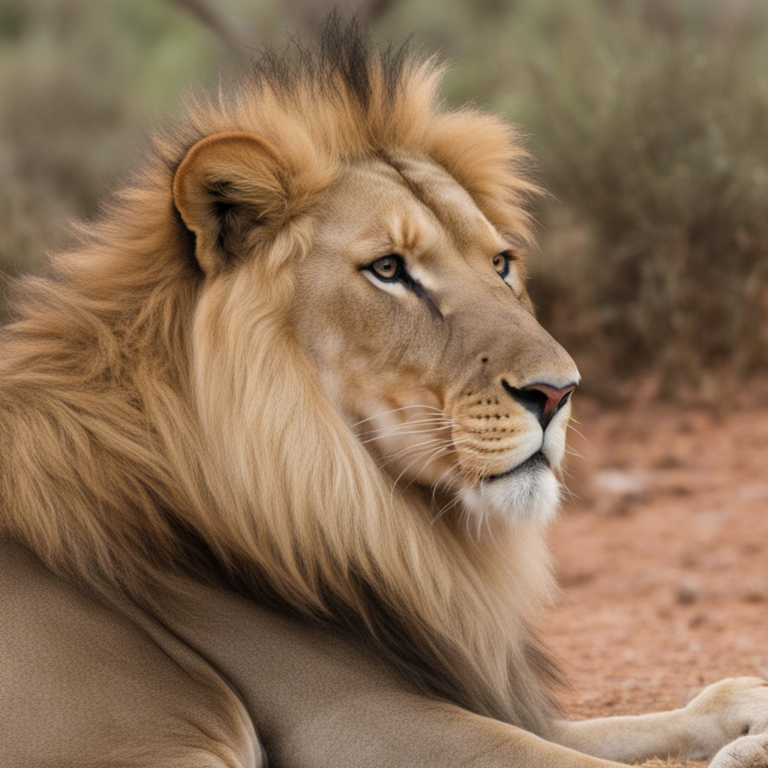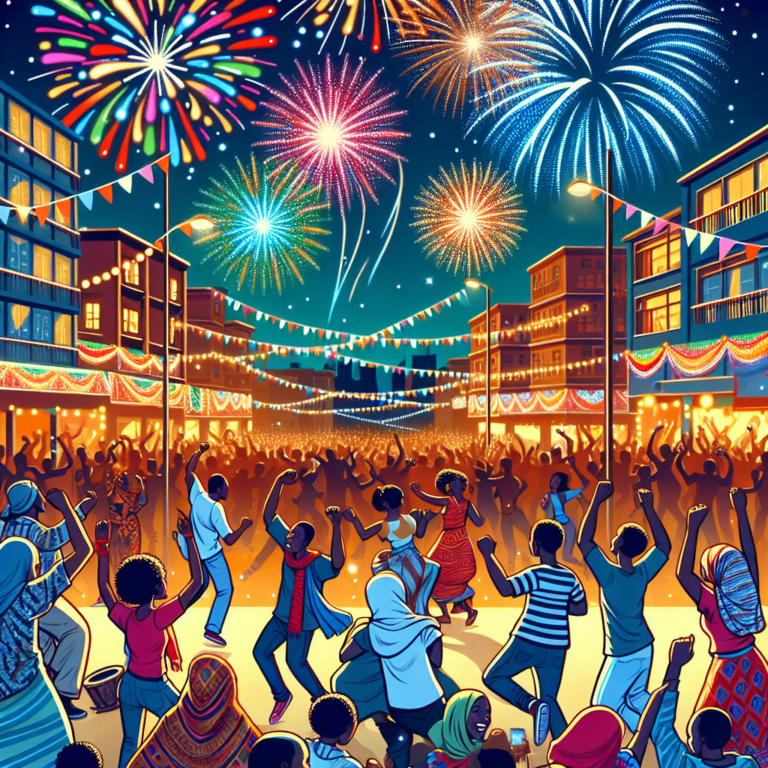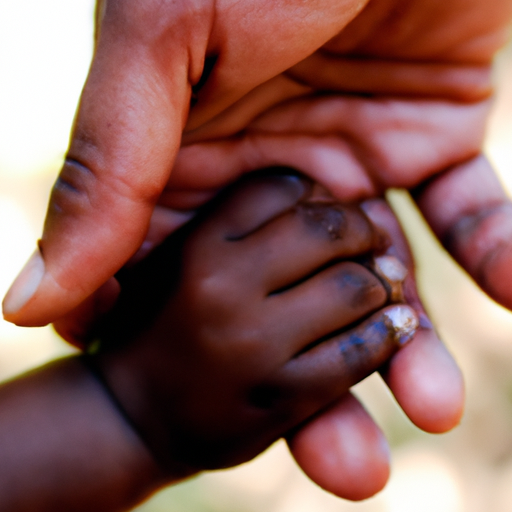Can You See Traditional Kenyan Dance Performances?
Imagine immersing yourself in the vibrant and rich culture of Kenya, where the rhythmic beats of traditional dances have been passed down through generations. As you delve into the heart of this captivating nation, you are greeted by a mesmerizing display of vibrant costumes, skillful movements, and infectious energy. From the graceful swaying of the Maasai to the spirited leaps of the Kikuyu, every dance tells a story deeply rooted in Kenyan traditions. Step into the world of traditional Kenyan dance performances, where the rhythm transports you to a colorful tapestry of history and heritage. Absolutely! Traditional Kenyan dance performances are a vibrant and captivating experience that showcase the rich cultural heritage of Kenya. These dances have been passed down from generation to generation, and they hold great significance in preserving and celebrating the country’s traditions. In this article, we will explore the history, types, costumes, instruments, significance, dance groups, national troupes, festivals, events, and tourist destinations related to traditional Kenyan dance. So, get ready to embark on a journey filled with rhythm, energy, and cultural fascination!
History of Traditional Kenyan Dance
Origins of Traditional Kenyan Dance
The roots of traditional Kenyan dance can be traced back to the earliest inhabitants of the region. The indigenous tribes, such as the Maasai, Samburu, Kikuyu, Luhya, and Luo, each developed their unique dance forms. These dances were not just a form of entertainment but played a crucial role in various aspects of tribal life, including ceremonies, rites of passage, social gatherings, and storytelling.
Influence of Cultural Traditions on Kenyan Dance
Over the centuries, Kenya has been influenced by various external cultures, such as Arab, Indian, and European. These influences have seeped into traditional Kenyan dance forms, resulting in the fusion of different styles and elements. This fusion has led to the evolution and diversification of Kenyan dance, making it even more vibrant and dynamic.
Evolution of Kenyan Dance Over Time
As Kenya went through significant historical events, such as colonization and independence, traditional Kenyan dance adapted and transformed. The dances began to incorporate modern elements, reflecting the changing times and the blending of cultures. Today, traditional Kenyan dance continues to evolve, combining tradition with contemporary influences, thus ensuring its relevance and continued existence.
Types of Traditional Kenyan Dances
Tribal Dances
Each tribe in Kenya has its own distinct set of dances that reflect its unique culture and traditions. From the vigorous jumping of the Maasai warriors to the graceful swaying movements of the Kikuyu, tribal dances provide a fascinating glimpse into the customs and values of the different ethnic groups in Kenya.
Initiation Dances
Initiation dances are performed to mark significant milestones in a person’s life, such as reaching adulthood or joining a specific social group. These dances often involve intricate movements and symbolize the transition from one stage of life to another. They are performed with great enthusiasm and are considered essential for the social and spiritual growth of individuals.
Ceremonial Dances
Ceremonial dances are performed during important cultural celebrations and events. These dances play a significant role in religious ceremonies, weddings, and harvest festivals. With their elaborate costumes, rhythmic movements, and energetic beats, ceremonial dances create a jubilant atmosphere and unite communities in celebration.
Social Dances
Social dances are an integral part of Kenyan social life. These dances are performed during social gatherings, such as weddings, parties, and community events. Social dances emphasize group participation and interaction, serving as a means of fostering social bonds and creating a sense of togetherness.
Narrative Dances
Narrative dances are a form of storytelling through movement. These dances convey historical events, legends, and moral lessons through choreographed sequences. The dancers use expressive gestures, facial expressions, and body movements to captivate the audience and transport them into the world of the story being told.
Traditional Kenyan Dance Costumes
Bright and Vibrant Fabrics
Traditional Kenyan dance costumes are known for their colorful and vibrant fabrics. The dancers wear garments made from various materials, such as cotton, silk, or traditional African prints. The colors and patterns of these fabrics are carefully chosen to reflect the cultural significance of the dance and enhance the visual appeal of the performance.
Intricate Beadwork
Beadwork holds immense cultural significance in Kenya, and it is often incorporated into traditional dance costumes. Intricately beaded necklaces, bracelets, anklets, and belts adorn the dancers, adding a touch of elegance and cultural symbolism to their attire. Each bead pattern and color combination has its unique meaning, representing different aspects of the wearer’s tribal identity.
Jewelry and Accessories
In addition to beadwork, traditional Kenyan dance costumes feature an array of jewelry and accessories. These may include cowrie shell necklaces, bone or wooden earrings, brass or copper bracelets, and feathered headdresses. These adornments not only enhance the visual appeal of the dancers but also contribute to the overall cultural narrative being portrayed.
Headpieces and Hairstyles
Elaborate headpieces often take center stage in traditional Kenyan dance costumes. These headpieces can be made from feathers, shells, beads, or fabric and are intricately designed to reflect the symbolism or representation of the dance. Hairstyles also play a significant role in traditional Kenyan dance. Intricate braids, buns, or hairstyles decorated with beads or other accessories further complement the overall visual spectacle of the performance.
Traditional Kenyan Dance Instruments
Drums
Drums are the heartbeat of traditional Kenyan dance. They provide the rhythmic foundation and drive the dancers’ movements. Made from hollowed-out logs or animal skins stretched over a frame, drums come in different shapes and sizes, each producing a unique sound. The deep resonant beats of the bass drum, accompanied by the livelier tones of the smaller drums, create the infectious energy that infuses the dance performances.
Rattles
Rattles play a significant role in adding a percussive element to traditional Kenyan dance music. Made from gourds or containers filled with seeds, pebbles, or small stones, rattles create a vibrant and captivating sound. The shaking of the rattles in synchronized patterns enhances the overall rhythm of the dance and engages the audience with its distinctive sound.
Flutes
Flutes are another commonly used instrument in traditional Kenyan dance performances. These wind instruments are typically made from bamboo or wood and produce melodious and soulful tunes. Flutes serve as a complementary instrument, often providing melodic interludes that add depth and emotion to the overall dance performance.
Horns
Horns, such as the antelope horn or the trumpet-like Kudu horn, are occasionally used in traditional Kenyan dance. These instruments produce a powerful and resonant sound, adding a dramatic element to the performances. The distinct calls of the horns can evoke a range of emotions and intensify the energy of the dancers, captivating the audience’s attention.
Significance of Traditional Kenyan Dances
Cultural Preservation and Identity
Traditional Kenyan dances play a crucial role in preserving the cultural heritage and identity of the various ethnic groups in Kenya. They serve as a reminder of the customs, beliefs, and values that have been passed down through generations. By keeping these dance forms alive, communities can maintain a connection with their roots and ensure that their traditions are not lost or forgotten.
Community Bonding and Celebration
Traditional Kenyan dances have always been a way for communities to come together and celebrate. Whether it’s a wedding, harvest festival, or other significant events, dancing creates a sense of unity and strengthens the bonds between individuals. It fosters a collective spirit and instills a sense of pride and belonging within the community.
Expression of Emotions
Dancing is a powerful form of expression, and traditional Kenyan dances allow individuals to convey a range of emotions. Whether it’s joy, sorrow, triumph, or love, dancers use their movements to express their feelings and connect with the audience on an emotional level. Through their dynamic performances, they provide a window into their experiences and touch the hearts of those who witness their artistry.
Education and Transmission of Knowledge
Traditional Kenyan dances are not just a means of entertainment; they are also a valuable educational tool. Younger generations learn about their cultural heritage through dance, gaining a deeper understanding of their roots and history. Moreover, the transmission of knowledge through dance ensures that traditions are passed down from older generations to younger ones, ensuring the continuity and preservation of cultural practices.
Traditional Kenyan Dance Groups
Community-based Dance Groups
Community-based dance groups are formed within local villages and neighborhoods, showcasing the talent and passion of the community members. These groups often consist of people of different ages and skill levels who come together to preserve and promote their traditional dance forms. Community-based dance groups are essential in passing on the knowledge and skills required to perform traditional Kenyan dances to younger generations.
Professional Dance Ensembles
Professional dance ensembles in Kenya are dedicated to showcasing the highest level of proficiency and artistic expression in traditional Kenyan dance. These ensembles consist of highly skilled and trained dancers who have honed their craft over the years. They perform at prestigious events, representing the cultural heritage of Kenya on national and international platforms.
Youth Dance Groups
Youth dance groups are integral to the future of traditional Kenyan dance. These groups provide a platform for young dancers to explore and express their creativity while learning and preserving traditional dance forms. Youth dance groups often collaborate with established dance organizations and participate in festivals and competitions, ensuring the continuation of traditional Kenyan dances for generations to come.
Kenyan National Dance Troupes
Kenya National Theatre
The Kenya National Theatre is a renowned institution that hosts and showcases various forms of performing arts, including traditional Kenyan dance. It serves as a platform for both amateur and professional dancers to exhibit their skills and share their cultural heritage. The Kenya National Theatre plays an instrumental role in promoting traditional Kenyan dances within the country and internationally.
Sarakasi Trust
The Sarakasi Trust is a nonprofit organization dedicated to fostering and promoting performing arts, including traditional Kenyan dances. They have a strong focus on outreach and community engagement, providing training, mentorship, and performance opportunities to aspiring dancers from marginalized backgrounds. The Sarakasi Trust’s commitment to cultural preservation and empowerment has made a significant impact on the traditional Kenyan dance scene.
Talanta Dance Troupe
The Talanta Dance Troupe is a nationally recognized dance group that specializes in traditional Kenyan dances. They aim to preserve and promote the diversity and richness of Kenyan cultural heritage through their performances. With their high-energy choreography and mesmerizing stage presence, the Talanta Dance Troupe has captivated audiences both locally and internationally.
Festivals and Events Featuring Traditional Kenyan Dances
Kenya International Dance Festival
The Kenya International Dance Festival is an annual event that brings together dance enthusiasts from Kenya and around the world. This festival showcases a wide range of dance styles, including traditional Kenyan dances. It serves as a platform for dancers to showcase their skills, exchange cultural experiences, and celebrate the power of dance in all its forms.
Maralal International Camel Derby
The Maralal International Camel Derby is a unique festival held in Maralal, Samburu County. While the main event is a popular camel race, the festival also includes cultural performances, including traditional Kenyan dances. Visitors to the festival have the opportunity to witness the vibrant and energetic dances performed by different ethnic groups in Kenya while immersing themselves in the local culture.
Mombasa Carnival
The Mombasa Carnival is a grand celebration of the rich cultural heritage of the coastal region of Kenya. This extravaganza features a parade showcasing traditional Kenyan dances, music, costumes, and arts and crafts. The carnival attracts locals and tourists alike, providing a fascinating insight into the traditions and customs of the coastal communities.
Lake Turkana Cultural Festival
The Lake Turkana Cultural Festival is an annual event held in Turkana County, northern Kenya. The festival brings together various ethnic groups from the region, providing them with a platform to showcase their cultural practices, including traditional dances. This vibrant celebration of diversity allows visitors to experience and appreciate the richness of Kenyan traditions firsthand.
Tourist Destinations for Traditional Kenyan Dance Performances
Kenya offers numerous tourist destinations where visitors can experience traditional Kenyan dance performances. Nairobi, the capital city, is home to several cultural centers, theaters, and performing arts venues, such as the Kenya National Theatre and the GoDown Arts Centre, where traditional Kenyan dances are regularly showcased. Other destinations, including Mombasa, Kisumu, and Eldoret, also feature performances by local dance groups, allowing visitors to immerse themselves in the authentic cultural experiences Kenya has to offer.
Preservation of Traditional Kenyan Dance
Government Initiatives
The Kenyan government recognizes the importance of preserving traditional Kenyan dances and has established various initiatives to support and promote these art forms. Through the Ministry of Arts and Culture, the government provides funding, creates platforms for showcasing traditional dances, and implements policies to safeguard cultural heritage.
NGO and Cultural Organizations
Non-governmental organizations (NGOs) and cultural organizations play a vital role in preserving and promoting traditional Kenyan dance. These organizations focus on research, documentation, training, and education programs to ensure the continued transmission of knowledge and skills associated with traditional dances. They work in collaboration with communities, artists, and the government to safeguard and revitalize these cultural treasures.
School and Community Programs
Schools and community programs are crucial in nurturing young talent and creating awareness about traditional Kenyan dances. Many educational institutions and community centers offer dance classes and workshops that educate students about the significance, techniques, and cultural context of these dances. Encouraging participation in traditional Kenyan dance from an early age ensures the continuity and preservation of these art forms.
Documentation and Research
The documentation and research of traditional Kenyan dance are essential for understanding and preserving these art forms. Scholars, cultural historians, and dance enthusiasts undertake research projects to document the history, techniques, and cultural significance of traditional Kenyan dances. This research not only adds to the body of knowledge but also helps inform preservation efforts and promote wider appreciation of these dances.
In conclusion, traditional Kenyan dance performances are an integral part of the country’s cultural heritage that continue to thrive and captivate audiences around the world. From the origins of these dances to the significance they hold for preserving culture and identity, from the vibrant costumes to the rhythmic beats of traditional instruments, every aspect of traditional Kenyan dance adds to its richness and beauty. Whether it’s watching the enchanting performances of community dance groups, admiring the artistry of national dance troupes, or experiencing the cultural immersion offered by festivals and events, there are numerous opportunities to witness the breathtaking beauty and power of traditional Kenyan dances. The preservation of these dances is a collective responsibility, and through government initiatives, NGO efforts, community programs, and dedicated research, traditional Kenyan dance will continue to enchant, educate, and inspire generations to come. So, the next time you have the chance, make sure to embrace the opportunity to witness the magic of traditional Kenyan dance performances!
